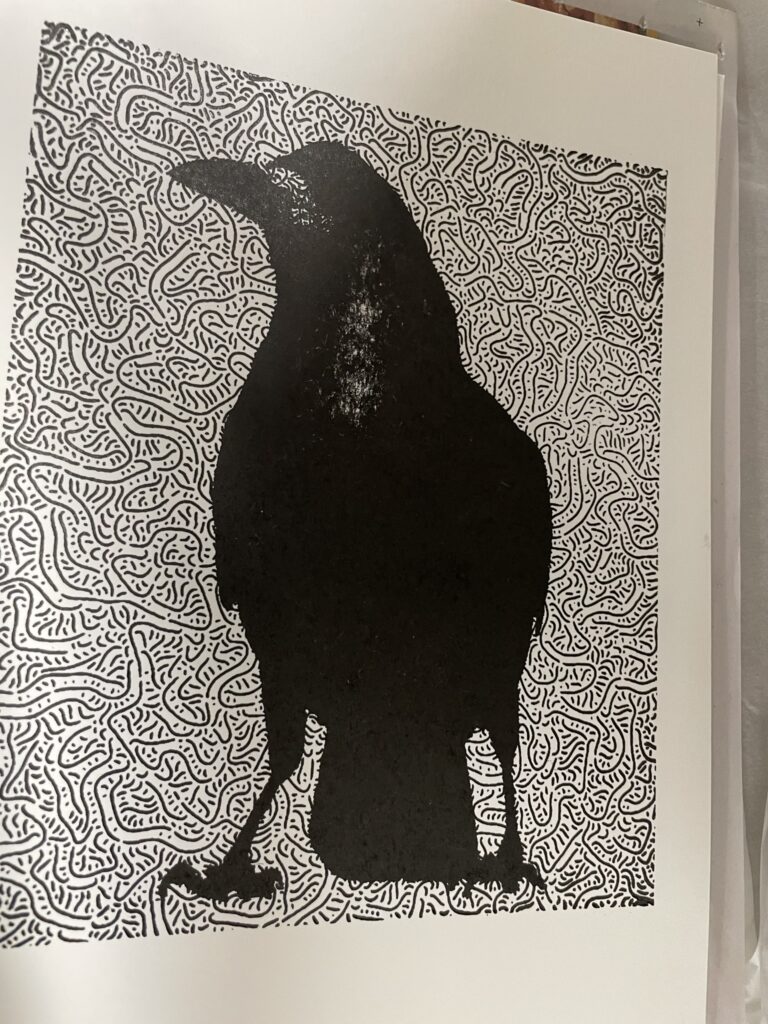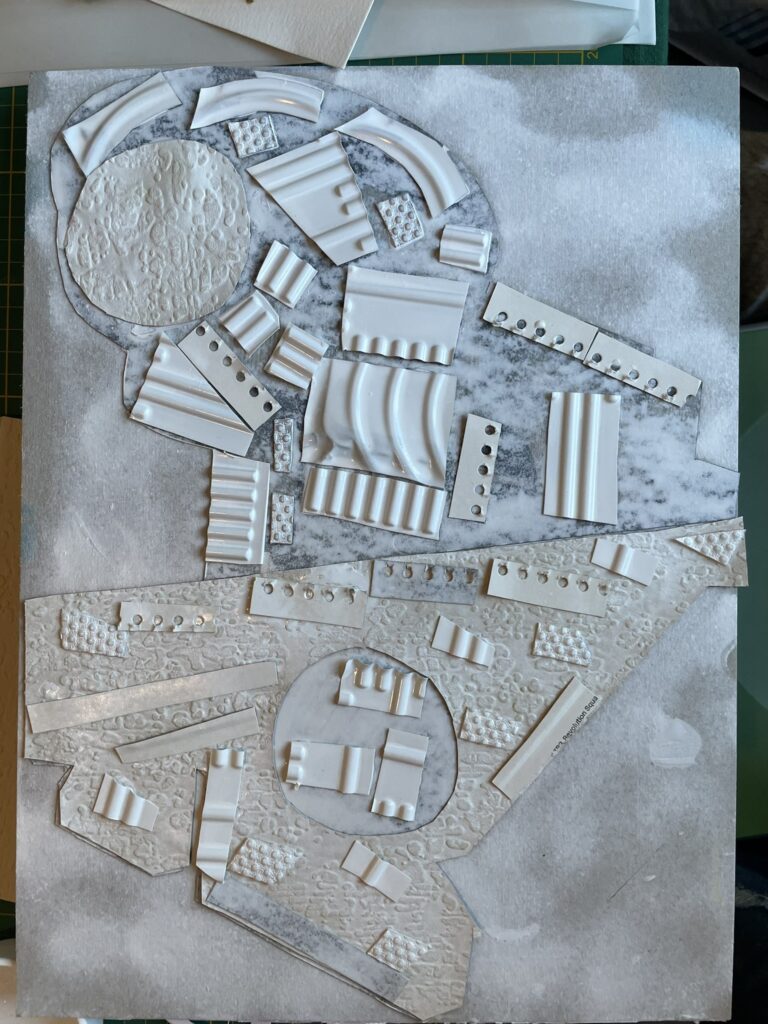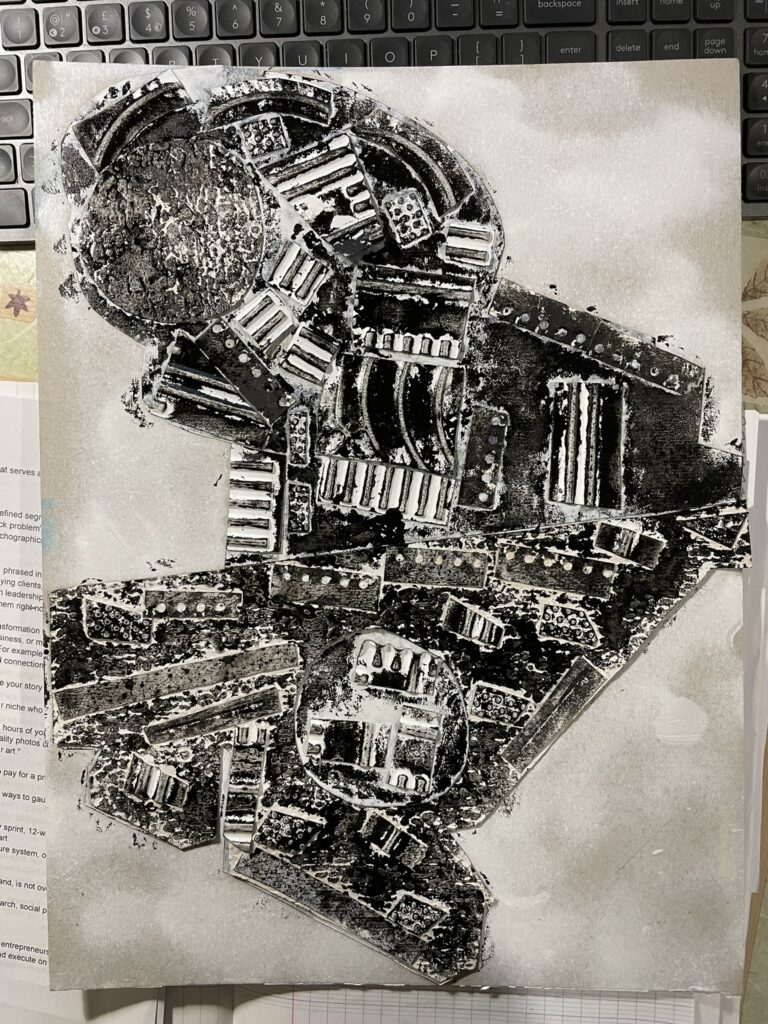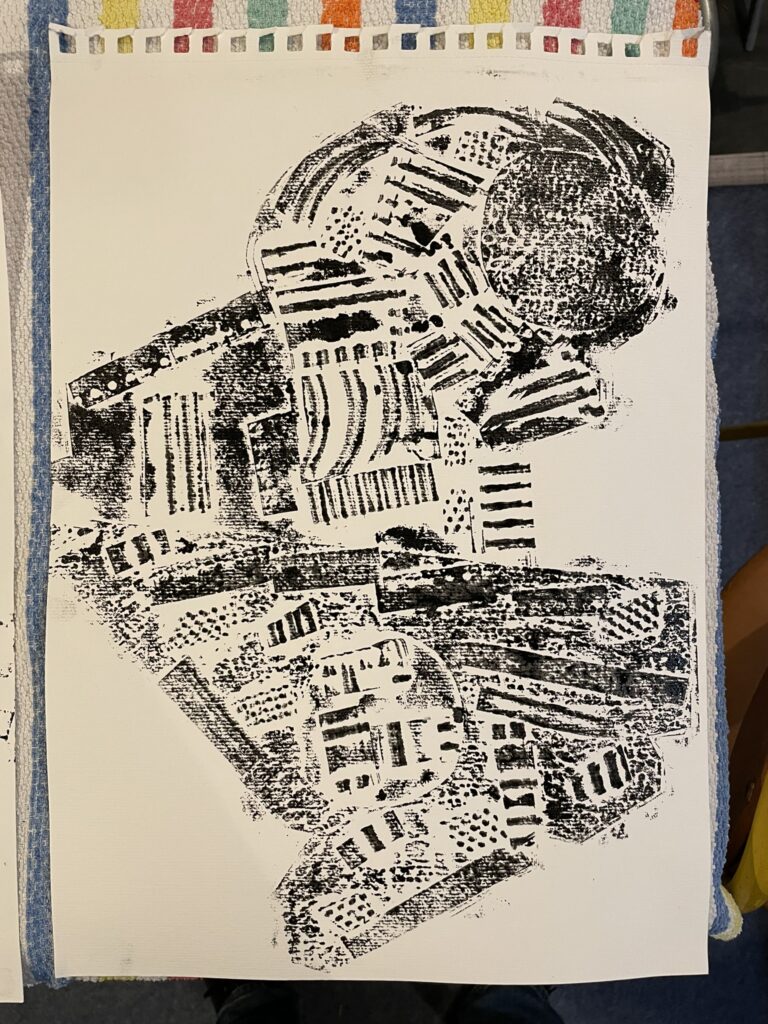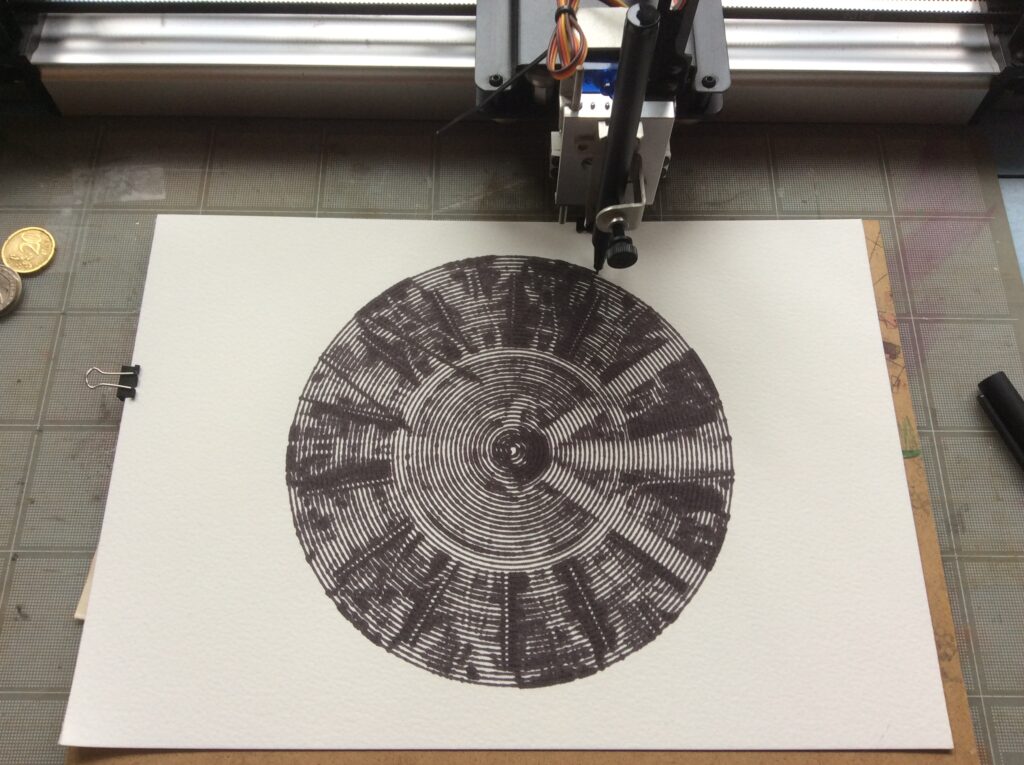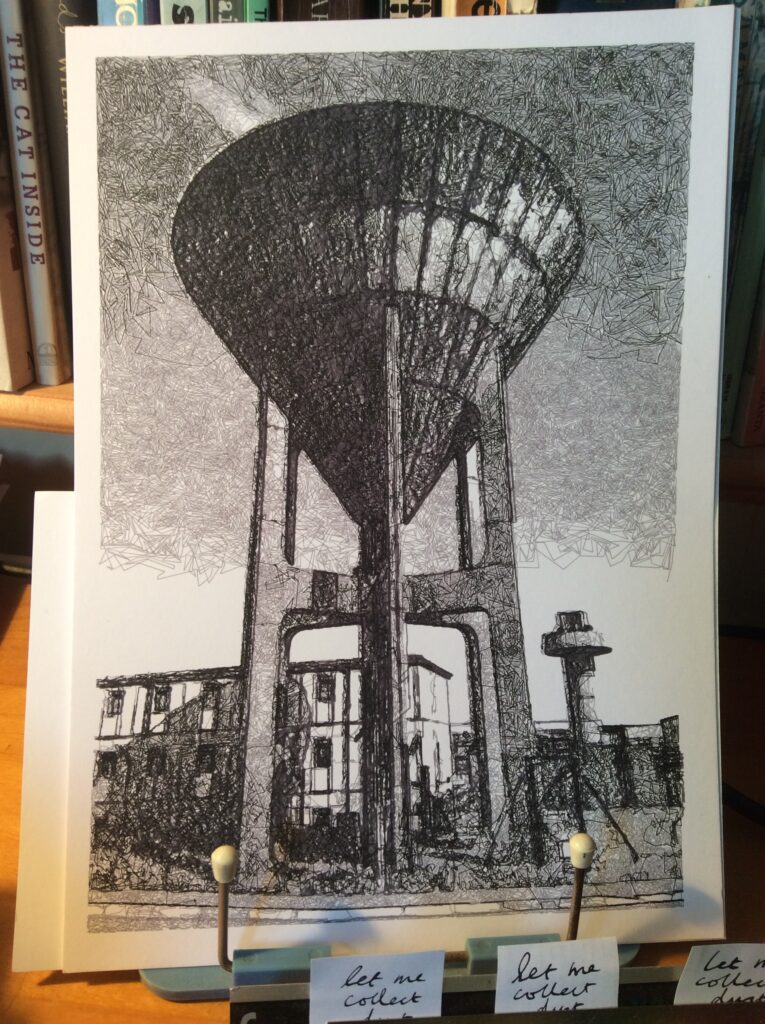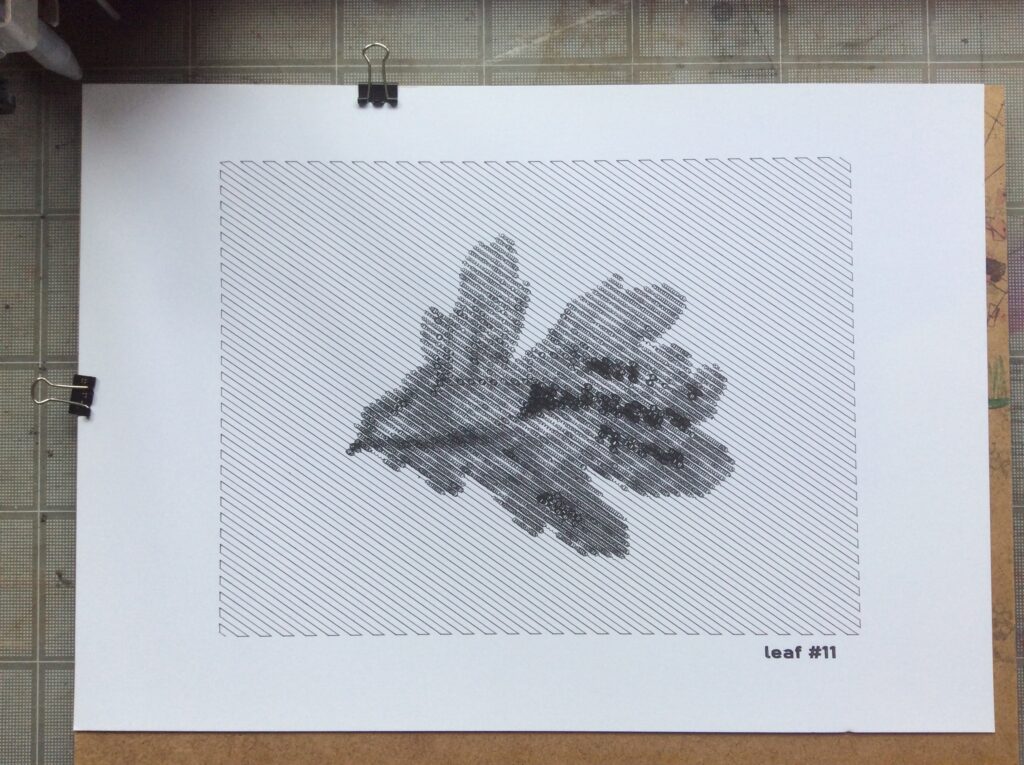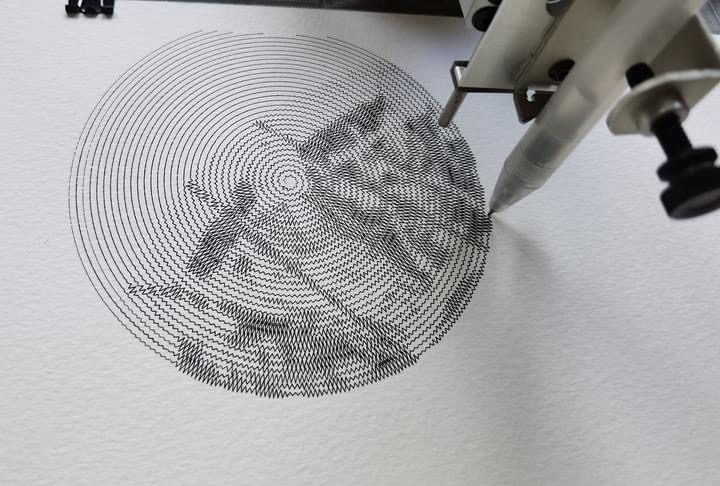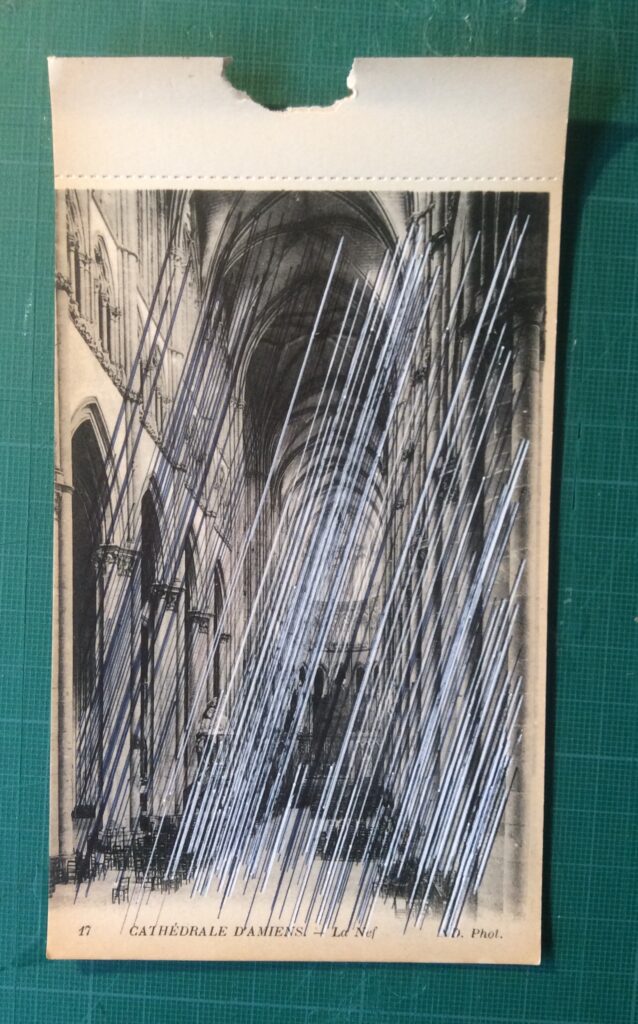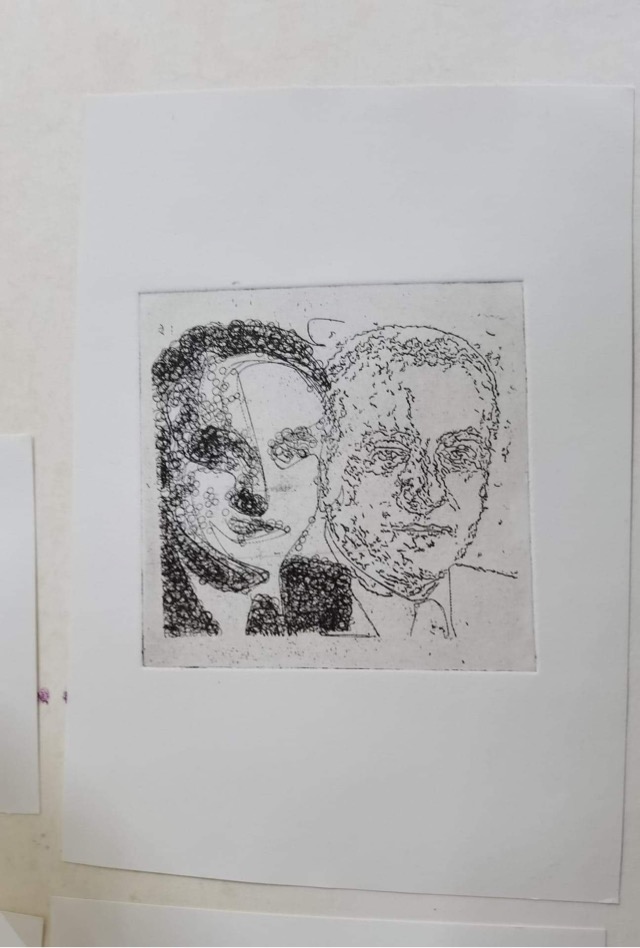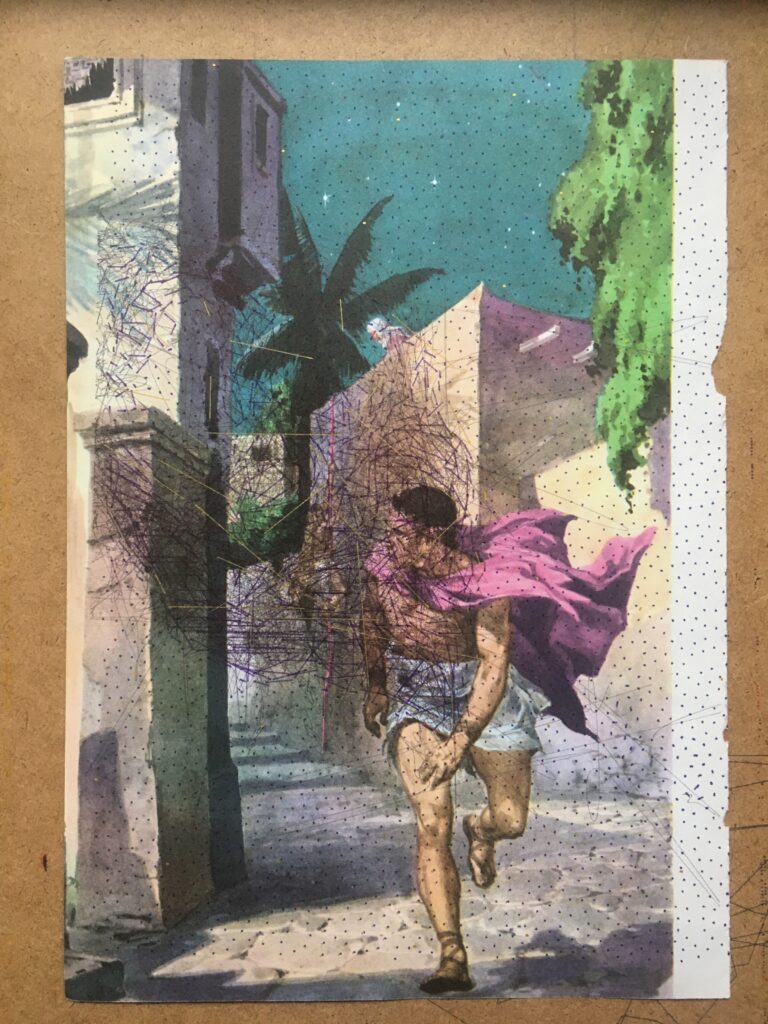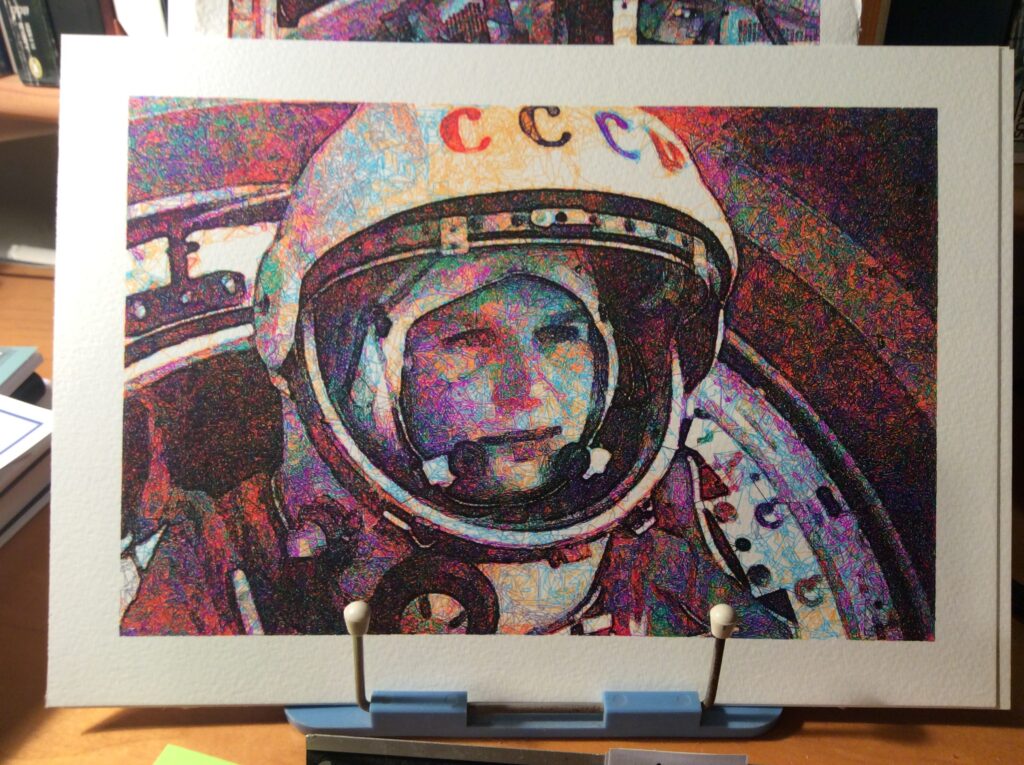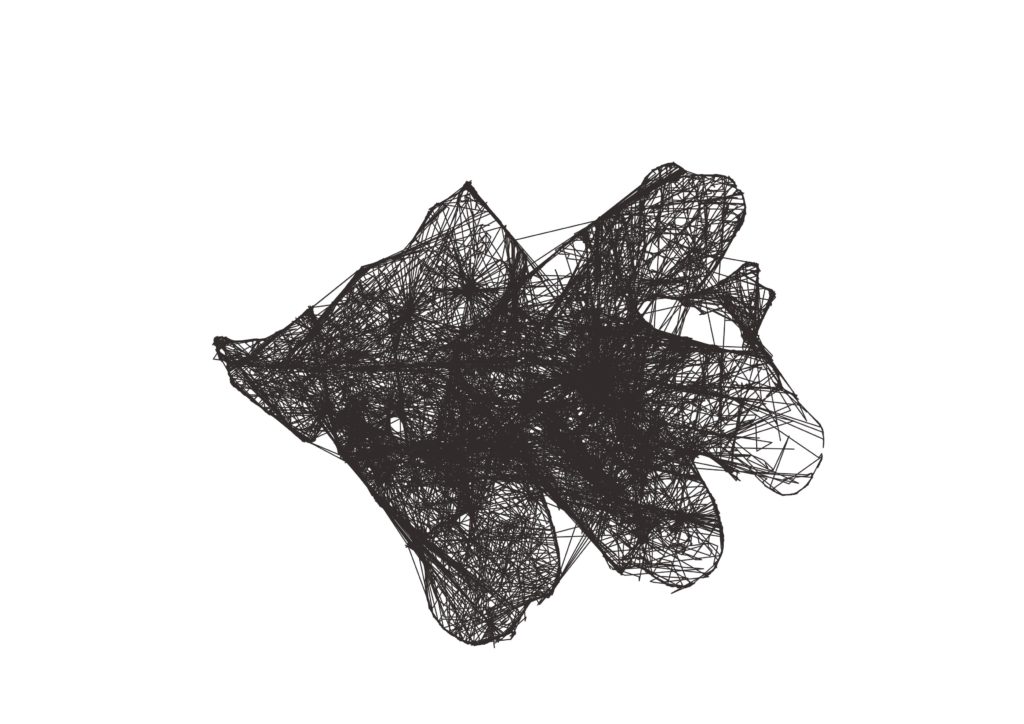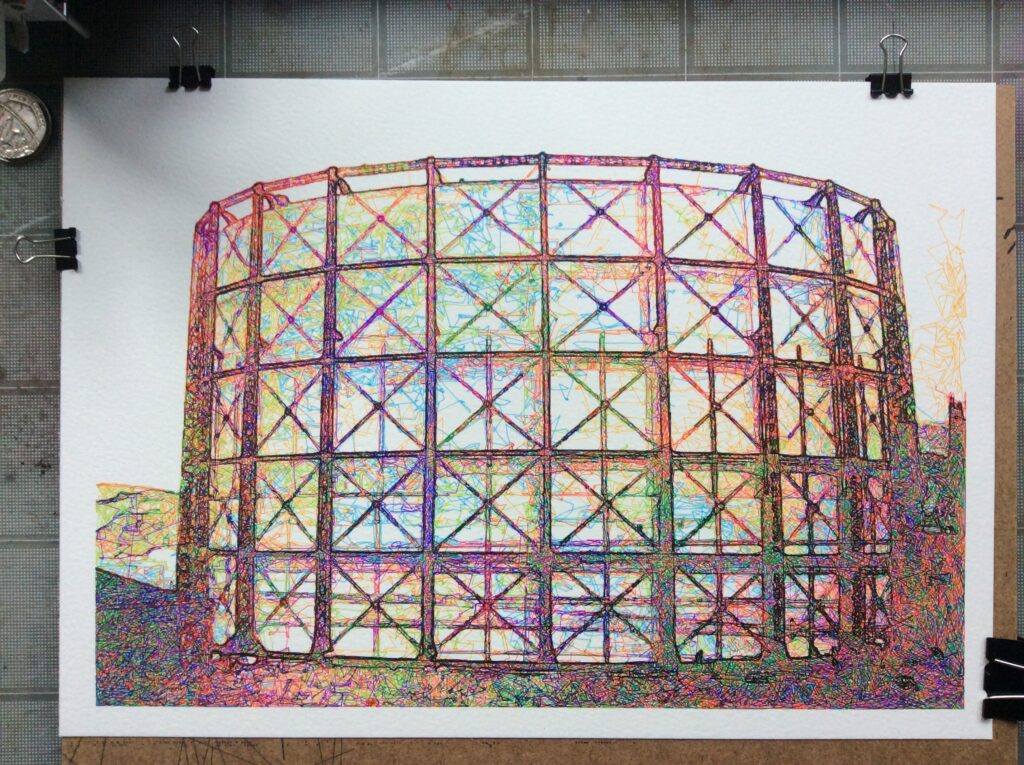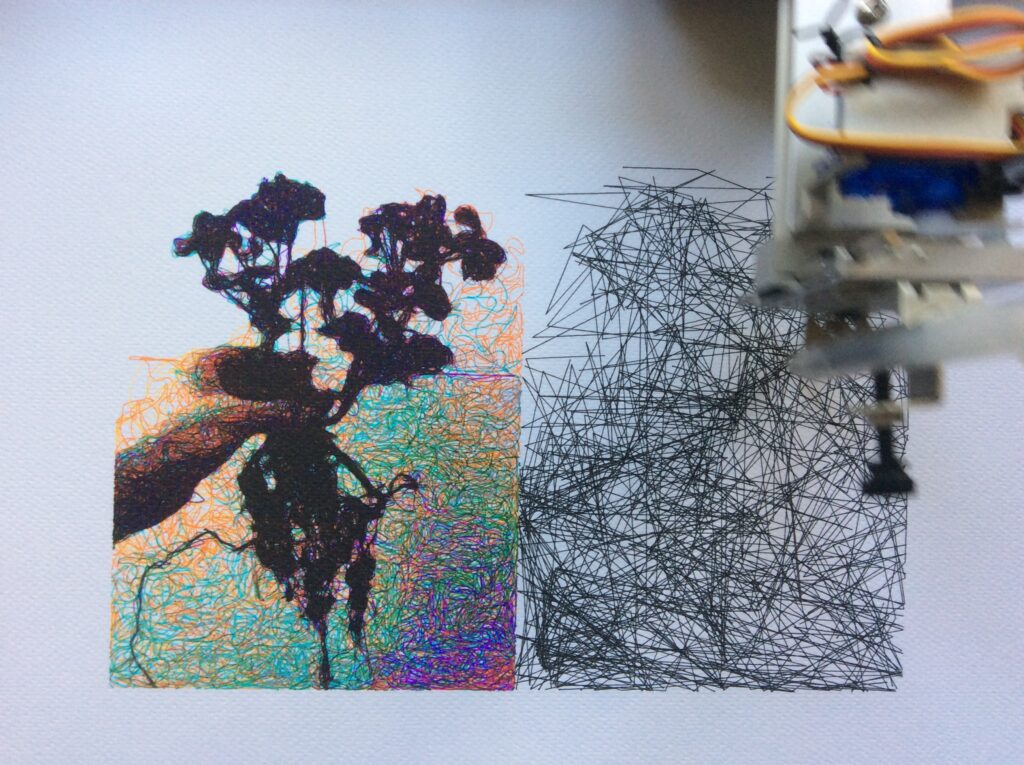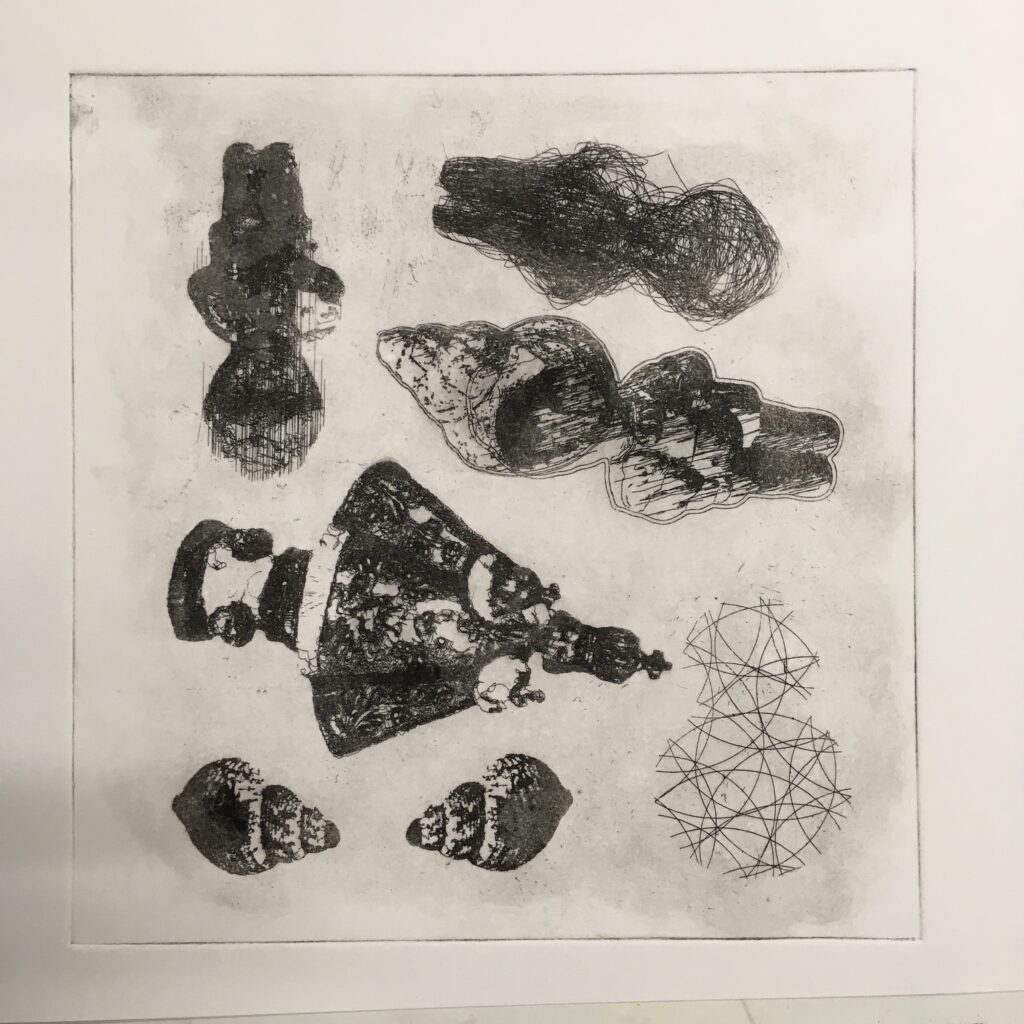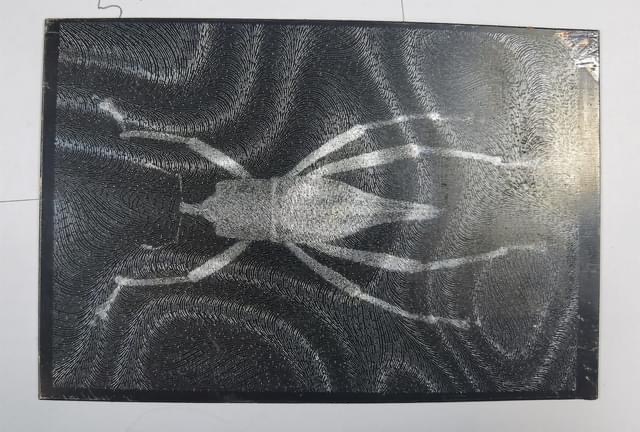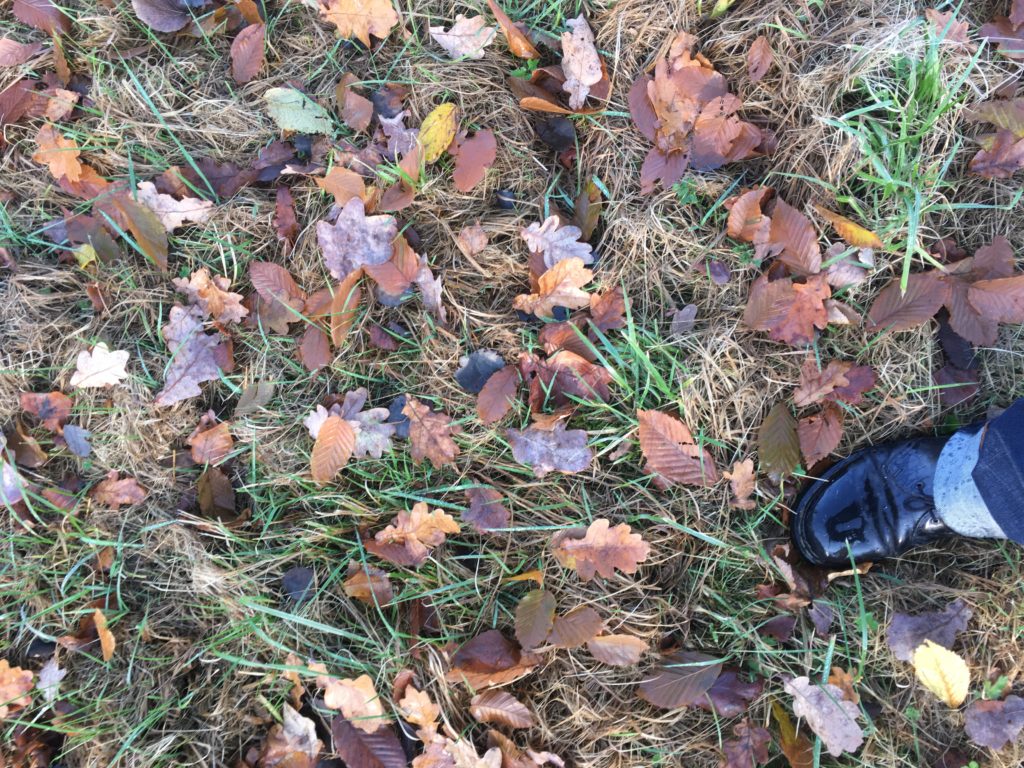At the end of December I did a one day one-to-one course in Photopolymer printing at East London Printmakers with Rebecca Holmes. I wanted to get my head around using photopolymer plates in my printmaking, something that I’d read a lot about but had difficulty understanding how it worked. Photopolymer is a commercial printing process where an exposed plate can be washed out in warm water, removing the need to etching acids. It offers huge potential for platemaking from a variety of sources. For my teaching day I took along a couple of images, one from a newspaper and one drawn by my Axidraw machine. I had a great day and Rebecca was a brilliant teacher. We made and printed using two different kinds of plates and the results were fabulous. Now I’m gearing up to make some more plates of my own to push my experimentation.


